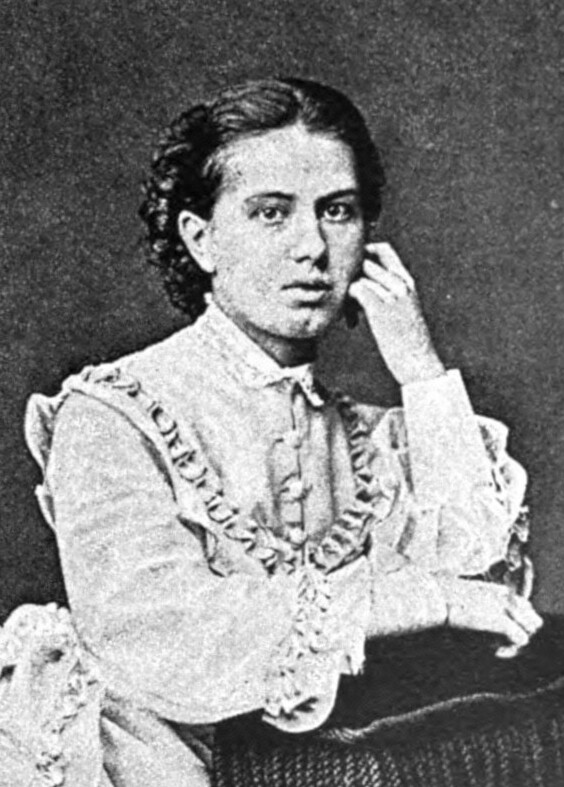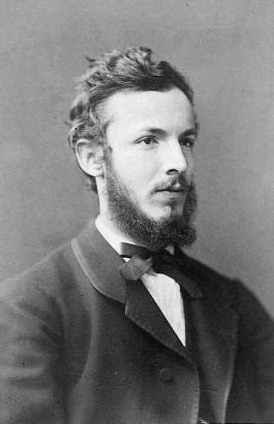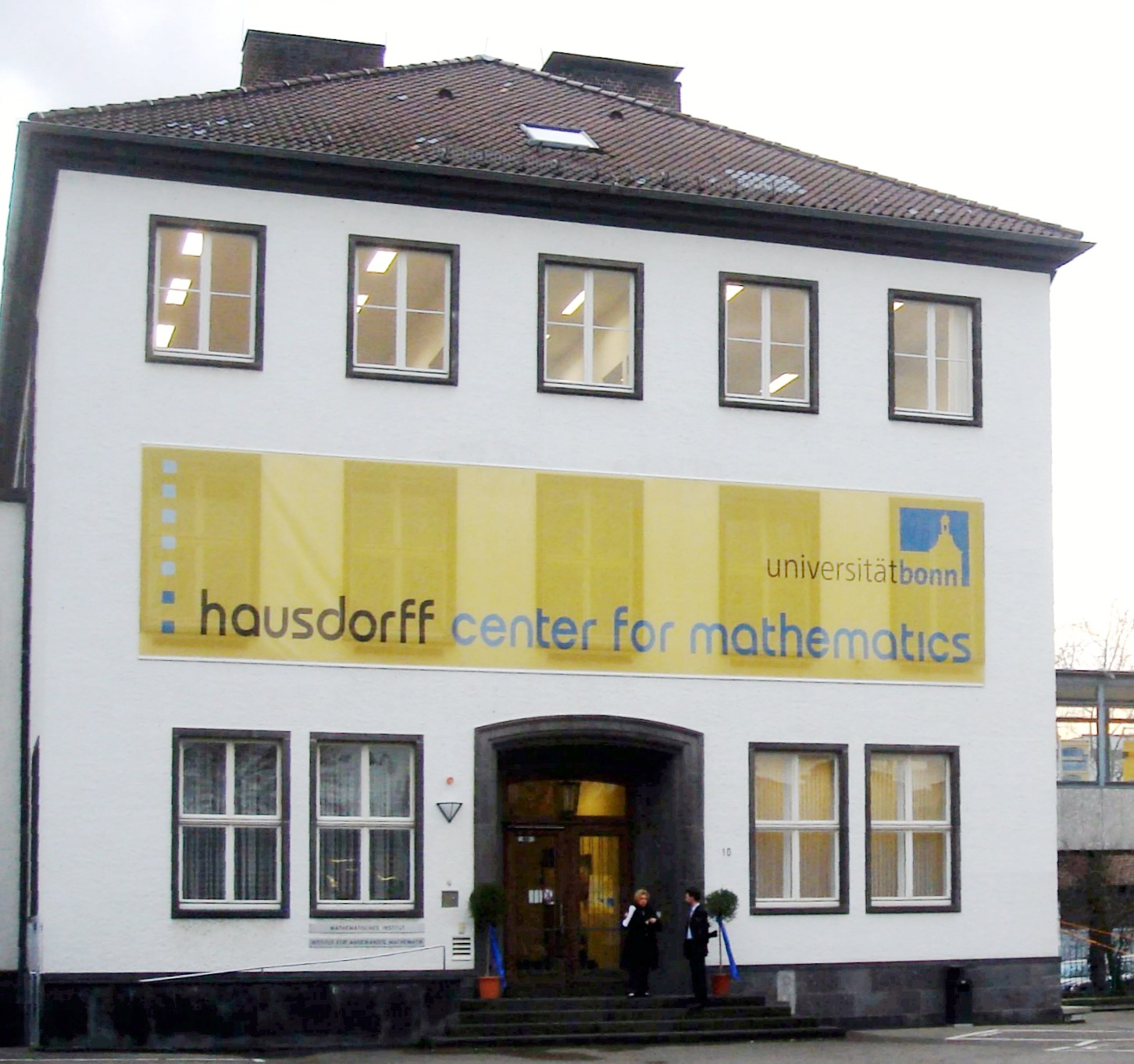|
Weierstrass
Karl Theodor Wilhelm Weierstrass (; ; 31 October 1815 – 19 February 1897) was a German mathematician often cited as the " father of modern analysis". Despite leaving university without a degree, he studied mathematics and trained as a school teacher, eventually teaching mathematics, physics, botany and gymnastics. He later received an honorary doctorate and became professor of mathematics in Berlin. Among many other contributions, Weierstrass formalized the definition of the continuity of a function and complex analysis, proved the intermediate value theorem and the Bolzano–Weierstrass theorem, and used the latter to study the properties of continuous functions on closed bounded intervals. Biography Weierstrass was born into a Roman Catholic family in Ostenfelde, a village near Ennigerloh, in the Province of Westphalia. Karl Weierstrass was the son of Wilhelm Weierstrass and Theodora Vonderforst, the former of whom was a government official and both of whom were Cathol ... [...More Info...] [...Related Items...] OR: [Wikipedia] [Google] [Baidu] |
Weierstrass Function
In mathematics, the Weierstrass function, named after its discoverer, Karl Weierstrass, is an example of a real-valued function (mathematics), function that is continuous function, continuous everywhere but Differentiable function, differentiable nowhere. It is also an example of a fractal curve. The Weierstrass function has historically served the role of a pathological (mathematics), pathological function, being the first published example (1872) specifically concocted to challenge the notion that every continuous function is differentiable except on a set of isolated points. Weierstrass's demonstration that continuity did not imply almost-everywhere differentiability upended mathematics, overturning several proofs that relied on geometric intuition and vague definitions of smoothness. These types of functions were disliked by contemporaries: Charles Hermite, on finding that one class of function he was working on had such a property, described it as a "lamentable scourge". Th ... [...More Info...] [...Related Items...] OR: [Wikipedia] [Google] [Baidu] |
Edmund Husserl
Edmund Gustav Albrecht Husserl (; 8 April 1859 – 27 April 1938) was an Austrian-German philosopher and mathematician who established the school of Phenomenology (philosophy), phenomenology. In his early work, he elaborated critiques of historicism and of psychologism in logic based on analyses of intentionality. In his mature work, he sought to develop a systematic foundational science based on the so-called Bracketing (phenomenology), phenomenological reduction. Arguing that Transcendence (philosophy), transcendental consciousness sets the limits of all possible knowledge, Husserl redefined phenomenology as a Transcendental idealism, transcendental-idealist philosophy. Husserl's thought profoundly influenced 20th-century philosophy, and he remains a notable figure in contemporary philosophy and beyond. Husserl studied mathematics, taught by Karl Weierstrass and Leo Königsberger, and philosophy taught by Franz Brentano and Carl Stumpf. He taught philosophy as a ''Privatdozent' ... [...More Info...] [...Related Items...] OR: [Wikipedia] [Google] [Baidu] |
Sofia Kovalevskaya
Sofya Vasilyevna Kovalevskaya (; born Korvin-Krukovskaya; – 10 February 1891) was a Russian mathematician who made noteworthy contributions to analysis, partial differential equations and mechanics. She was a pioneer for women in mathematics around the world – the first woman to earn a doctorate (in the modern sense) in mathematics, the first woman appointed to a full professorship in northern Europe and one of the first women to work for a scientific journal as an editor. According to historian of science Ann Hibner Koblitz, Kovalevskaya was "the greatest known woman scientist before the twentieth century". Historian of mathematics Roger Cooke writes: Her sister was the socialist Anne Jaclard. There are several alternative transliterations of her name. She herself used Sophie Kowalevski (or occasionally Kowalevsky) in her academic publications. In Sweden she was known as Sonja Kovalevsky; Sonja (Russian ) is her Russian nickname. Background and early education Sofya ... [...More Info...] [...Related Items...] OR: [Wikipedia] [Google] [Baidu] |
Christoph Gudermann
Christoph Gudermann (25 March 1798 – 25 September 1852) was a German mathematician noted for introducing the Gudermannian function and the concept of uniform convergence, and for being the teacher of Karl Weierstrass, who was greatly influenced by Gudermann's course on elliptic functions in 1839–1840, the first such course to be taught in any institute. Biography Gudermann was born in Vienenburg. He was the son of a school teacher and became a teacher himself after studying at the University of Göttingen. He began his teaching career in Kleve and then transferred to a school in Münster. Gudermann introduced the concept of uniform convergence in an 1838 paper on elliptic functions, but only observed it informally, neither formalizing it nor using it in his proofs. Instead, Weierstrass elaborated and applied uniform convergence. His researches into spherical geometry and special functions focused on particular cases, so that he did not receive the credit given to those wh ... [...More Info...] [...Related Items...] OR: [Wikipedia] [Google] [Baidu] |
Hermann Schwarz
Karl Hermann Amandus Schwarz (; 25 January 1843 – 30 November 1921) was a German mathematician, known for his work in complex analysis. Life Schwarz was born in Hermsdorf, Silesia (now Sobieszów, Poland). In 1868 he married Marie Kummer, who was the daughter to the mathematician Ernst Eduard Kummer and Ottilie née Mendelssohn (a daughter of Nathan Mendelssohn's and granddaughter of Moses Mendelssohn). Schwarz and Kummer had six children, including his daughter Emily Schwarz. Schwarz originally studied chemistry in Berlin but Ernst Eduard Kummer and Karl Theodor Wilhelm Weierstrass persuaded him to change to mathematics. He received his Ph.D. from the Universität Berlin in 1864 and was advised by Kummer and Weierstrass. Between 1867 and 1869 he worked at the University of Halle, then at the Swiss Federal Polytechnic. From 1875 he worked at Göttingen University, dealing with the subjects of complex analysis, differential geometry and the calculus of variations. H ... [...More Info...] [...Related Items...] OR: [Wikipedia] [Google] [Baidu] |
Wilhelm Killing
Wilhelm Karl Joseph Killing (10 May 1847 – 11 February 1923) was a German mathematician who made important contributions to the theories of Lie algebras, Lie groups, and non-Euclidean geometry. Life Killing studied at the University of Münster and later wrote his dissertation under Karl Weierstrass and Ernst Kummer at Berlin in 1872. He taught in gymnasia (secondary schools) from 1868 to 1872. In 1875, he married Anna Commer, who was the daughter of a music lecturer. He became a professor at the seminary college Collegium Hosianum in Braunsberg (now Braniewo). He took holy orders in order to take his teaching position. He became rector of the college and chair of the town council. As a professor and administrator, Killing was widely liked and respected. Finally, in 1892 he became a professor at the University of Münster. In 1886, Killing and his wife entered the Third Order of Franciscans. Work In 1878 Killing wrote on space forms in terms of non-Euclidean geom ... [...More Info...] [...Related Items...] OR: [Wikipedia] [Google] [Baidu] |
Ludwig Stickelberger
Ludwig Stickelberger (18 May 1850 – 11 April 1936) was a Swiss mathematician who made important contributions to linear algebra (theory of elementary divisors) and algebraic number theory (Stickelberger relation in the theory of cyclotomic fields). Short biography Stickelberger was born in Buch in the canton of Schaffhausen into a family of a pastor. He graduated from a gymnasium in 1867 and studied next in the University of Heidelberg. In 1874 he received a doctorate in Berlin under the direction of Karl Weierstrass for his work on the transformation of quadratic forms to a diagonal form. In the same year, he obtained his Habilitation from Polytechnicum in Zurich (now ETH Zurich). In 1879 he became an extraordinary professor in the Albert Ludwigs University of Freiburg. From 1896 to 1919 he worked there as a full professor, and from 1919 until his return to Basel in 1924 he held the title of a distinguished professor ("ordentlicher Honorarprofessor"). He was married in ... [...More Info...] [...Related Items...] OR: [Wikipedia] [Google] [Baidu] |
Friedrich Schottky
Friedrich Hermann Schottky (24 July 1851 – 12 August 1935) was a German mathematician who worked on elliptic, abelian, and theta functions and introduced Schottky groups and Schottky's theorem. Biography Friedrich Hermann Schottky was born in Breslau, Germany (now Wrocław, Poland). His father, Dr. Hermann Friedrich Schottky, was an English teacher and his mother, Louise Winkler, was a florist. He attended from 1860 to 1870, where his classmates included , , and Eberhard Gothein.From 1870 to 1874 he attended the University of Breslau. In 1875 Schottky received his doctorate, studying under Karl Weierstrass and Hermann von Helmholtz at Friedrich Wilhelm University of Berlin. Schottky was a lecturer at the University of Breslau from 1878 to 1882, a professor at the University of Zurich from 1882 to 1892, and a professor at Philipps University of Marburg from 1892 to 1902. In 1902, through his friendship with Ferdinand Georg Frobenius, Schottky was able to obtain a p ... [...More Info...] [...Related Items...] OR: [Wikipedia] [Google] [Baidu] |
Georg Frobenius
Ferdinand Georg Frobenius (26 October 1849 – 3 August 1917) was a German mathematician, best known for his contributions to the theory of elliptic functions, differential equations, number theory, and to group theory. He is known for the famous determinantal identities, known as Frobenius–Stickelberger formulae, governing elliptic functions, and for developing the theory of biquadratic forms. He was also the first to introduce the notion of rational approximations of functions (nowadays known as Padé approximants), and gave the first full proof for the Cayley–Hamilton theorem. He also lent his name to certain differential-geometric objects in modern mathematical physics, known as Frobenius manifolds. Biography Ferdinand Georg Frobenius was born on 26 October 1849 in Charlottenburg, a suburb of Berlin, from parents Christian Ferdinand Frobenius, a Protestant parson, and Christine Elizabeth Friedrich. He entered the Joachimsthal Gymnasium in 1860 when he was nearly el ... [...More Info...] [...Related Items...] OR: [Wikipedia] [Google] [Baidu] |
Georg Cantor
Georg Ferdinand Ludwig Philipp Cantor ( ; ; – 6 January 1918) was a mathematician who played a pivotal role in the creation of set theory, which has become a foundations of mathematics, fundamental theory in mathematics. Cantor established the importance of one-to-one correspondence between the members of two sets, defined infinite set, infinite and well-order, well-ordered sets, and proved that the real numbers are more numerous than the natural numbers. Cantor's method of proof of this theorem implies the existence of an infinity of infinities. He defined the cardinal number, cardinal and ordinal number, ordinal numbers and their arithmetic. Cantor's work is of great philosophical interest, a fact he was well aware of. Originally, Cantor's theory of transfinite numbers was regarded as counter-intuitive – even shocking. This caused it to encounter resistance from mathematical contemporaries such as Leopold Kronecker and Henri Poincaré and later from Hermann Wey ... [...More Info...] [...Related Items...] OR: [Wikipedia] [Google] [Baidu] |
Weierstrass Product Inequality
In mathematics, the Weierstrass product inequality states that for any real numbers 0 ≤ ''x1'', ''..., xn'' ≤ 1 we have :(1-x_1)(1-x_2)(1-x_3)(1-x_4)....(1-x_n) \geq 1-S_n, and similarly, for 0 ≤ ''x1'', ''..., xn,'' :(1+x_1)(1+x_2)(1+x_3)(1+x_4)....(1+x_n) \geq 1+S_n, where S_n=x_1+x_2+x_3+x_4+....+x_n. The inequality is named after the German mathematician Karl Weierstrass. Proof The inequality with the subtractions can be proven easily via mathematical induction Mathematical induction is a method for mathematical proof, proving that a statement P(n) is true for every natural number n, that is, that the infinitely many cases P(0), P(1), P(2), P(3), \dots all hold. This is done by first proving a .... The one with the additions is proven identically. We can choose n = 1 as the base case and see that for this value of n we get : 1 -x_1 \geq 1 - x_1 which is indeed true. Assuming now that the inequality holds for all natural nu ... [...More Info...] [...Related Items...] OR: [Wikipedia] [Google] [Baidu] |
University Of Bonn
The University of Bonn, officially the Rhenish Friedrich Wilhelm University of Bonn (), is a public research university in Bonn, North Rhine-Westphalia, Germany. It was founded in its present form as the () on 18 October 1818 by Frederick William III, as the linear successor of the () which was founded in 1777. The University of Bonn offers many undergraduate and graduate programs in a range of subjects and has 544 professors. The University of Bonn is a member of the U15 (German universities), German U15 association of major research-intensive universities in Germany and has the title of "University of Excellence" under the German Universities Excellence Initiative. Bonn has 6 Clusters of Excellence, the most of any German university; the Hausdorff Center for Mathematics, the Matter and Light for Quantum Computing cluster, Bonn Center for Dependency and Slavery Studies, PhenoRob: Research for the Future of Crop Production, the Immune Sensory System cluster, and ECONtribute: M ... [...More Info...] [...Related Items...] OR: [Wikipedia] [Google] [Baidu] |




